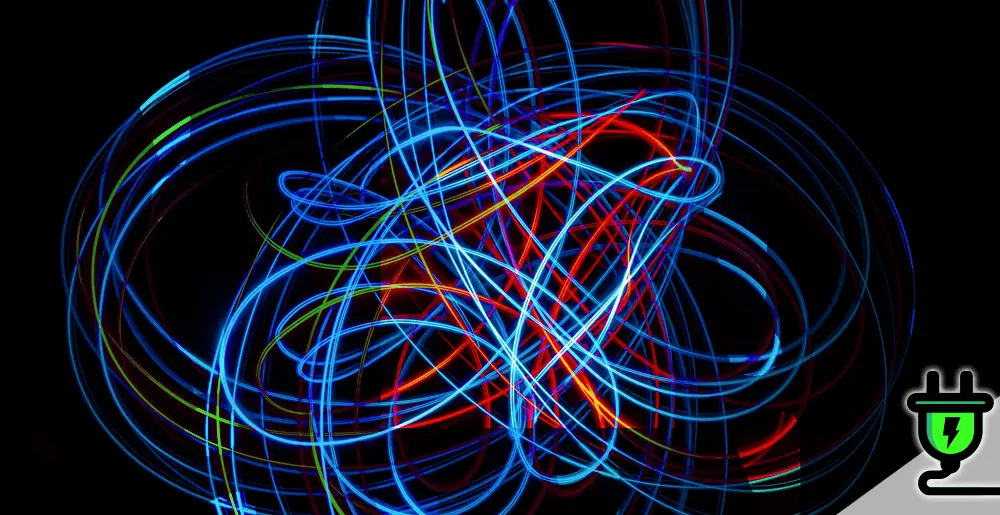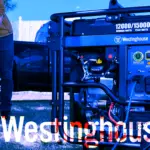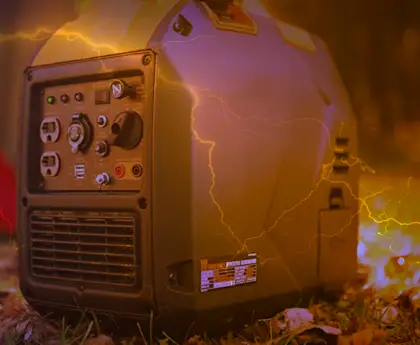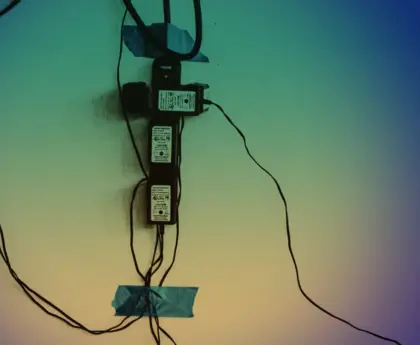Are you left scratching your head, asking yourself – why is my generator not producing enough power You’re not alone; this is a common problem experienced by many.
The most common reasons for your generator not producing enough power is due to the loss of residual magnetism in the alternator, and/or a failed automatic voltage regulator (AVR) or another excitation component.
In this guide, we will explore the variety of factors that might be behind your generator’s insufficient power output and provide easy-to-follow solutions to get it back up and running efficiently.
Keep reading to understand in simple terms what may be at fault, how to fix it, and when you should call in the professionals!
Common Reasons for a Generator Not Producing Enough Power
Common reasons for a generator not producing enough power can include loss of residual magnetism, poor connections, excitation circuit wiring errors or blockages, tripped breakers, worn brushes, and defective AVR (Automatic Voltage Regulator).
Loss of residual magnetism
Generators need residual magnetism to produce power. If this magnetic field degrades or vanishes, your generator will struggle to generate electricity. This issue often arises when a generator remains dormant for too long without being used.
The energy stored gets lost over time, resulting in loss of residual magnetism. It could also occur due to drastic changes in the load, where the connected devices suddenly consume much more power than usual, causing an imbalance in the system, and leading to a loss of residual magnetism.
Poor connections
Poor connections can be a significant factor in why your generator is not producing enough power. When the electrical connections are loose, damaged, or improperly connected, it can result in a weak flow of electricity.
This can lead to a decrease in power output from your generator or even cause it to stop working altogether. To fix this issue, you will need to thoroughly inspect all the electrical connections and tighten any loose wires or terminals.
It’s also important to ensure that the wiring is properly connected and that there are no frayed or damaged wires. By addressing poor connections, you can help restore proper power generation from your generator.
Excitation circuit wiring error or blockage
An excitation circuit wiring error or blockage can be another reason why your generator is not producing enough power. This problem can interrupt the flow of electricity and prevent the generator from generating sufficient output.
It is important to carefully inspect the wiring connections and ensure that they are properly connected and free from any obstructions or damage. If there is an error or blockage in the excitation circuit, it may require troubleshooting and repairs by a professional electrician to resolve the issue and restore your generator’s power generation capability.
Tripped breaker
If your generator is not producing enough power, one possible reason could be a tripped breaker. When a breaker trips, it shuts off the flow of electricity to protect the circuit from overloading or short circuits.
If the breaker connected to your generator has tripped, it will disrupt the power output and prevent it from generating sufficient electricity. Checking and resetting the tripped breaker can help resolve this issue and restore proper power production for your generator.
Worn brushes
Worn brushes in a generator can cause it to not produce enough power. Brushes are small carbon blocks that make contact with the rotating armature, allowing an electrical current to flow and generate power.
Over time, these brushes can become worn down or damaged, resulting in poor contact and reduced power output. When the brushes are worn, they may need to be replaced to restore the proper connection with the armature and ensure efficient power generation.
Regular inspection and maintenance of the brushes can help prevent this issue from affecting your generator’s performance.
Defective Automatic Voltage Regulator (AVR)
A defective AVR, or Automatic Voltage Regulator, can be the cause of a generator not producing enough power. The AVR is responsible for regulating and stabilizing the voltage output of the generator.
If it becomes faulty or malfunctions, it can lead to insufficient power generation. This can manifest as fluctuating or inconsistent voltage output from the generator, resulting in inadequate electrical supply.
In such cases, repairing or replacing the defective AVR is necessary to restore proper functionality and ensure sufficient power production by the generator.
How to Fix a Generator Not Producing Enough Power
To fix a generator not producing enough power, you can restore the residual magnetism, check and improve connections, troubleshoot the excitation circuit, reset tripped breakers, replace worn brushes, or repair/replace a defective AVR.
Restore residual magnetism
To restore residual magnetism in a generator, you can follow a simple process. Start by running the generator and allowing it to reach its normal operating speed. Once it is running smoothly, locate the terminal block or outlets on your generator.
Using a small 12-volt battery (such as a car battery), connect the positive (+) terminal of the battery to the positive (+) terminal of the generator, then connect the negative (-) terminal of the battery to any exposed metal part of the generator.
Keep these connections for about 10-15 seconds while the generator is still running. This will help restore any lost residual magnetism and allow your generator to start generating power again efficiently.
Check and improve connections
One important step in troubleshooting a generator that is not producing enough power is to check and improve the connections. Poor electrical connections can hinder the flow of electricity, resulting in decreased power output.
Make sure all wiring connections are secure and free from corrosion or damage. Inspect the outlets for any signs of damage, such as loose or bent prongs. Ensure that the generator is properly grounded to prevent electrical malfunctions.
By checking and improving these connections, you can help optimize the performance of your generator and increase its power output levels.
Troubleshoot excitation circuit
To troubleshoot the excitation circuit, start by checking the wiring for any errors or blockages. Faulty connections can cause a generator to produce insufficient power. Make sure all wires are properly connected and secure.
If there is no issue with the wiring, inspect the voltage regulator settings. Improper settings can lead to a lack of power generation. Double-check the adjustment and make any necessary changes.
Remember to also check for low fuel levels as this can affect power output. By addressing these potential issues in the excitation circuit, you can help resolve any problems with your generator’s power production capabilities without having to seek professional assistance right away.
Reset tripped breaker
If your generator is not producing enough power, one possible reason could be a tripped breaker. When a circuit becomes overloaded, the breaker automatically shuts off to prevent damage or fire hazards.
To fix this issue, you can reset the tripped breaker by flipping it firmly into the “on” position. However, if the breaker continues to trip repeatedly, it may indicate a more complex electrical problem that requires professional assistance.
Replace worn brushes
Generator brushes play a crucial role in generating electricity. Over time, these brushes can become worn and less effective, resulting in a decrease in power production. When the generator’s brushes are worn out, they no longer make proper contact with the armature, which leads to decreased electrical output.
By replacing these worn brushes with new ones, you can restore optimal performance to your generator and ensure that it is able to produce sufficient power for your needs.
Repair or replace defective AVR
To fix a generator that is not producing enough power, one possible solution is to repair or replace the defective AVR (Automatic Voltage Regulator). The AVR controls the output voltage of the generator and ensures it stays at a consistent level.
If there is an issue with the AVR, it can cause fluctuations in the voltage output, leading to insufficient power generation. By repairing or replacing this component, you can restore proper voltage regulation and get your generator back to producing the necessary amount of power.
Additional Factors to Consider
Overloading the generator, regular maintenance, and understanding electrical load demands are important factors to consider when troubleshooting a generator not producing enough power.
Let’s take a look at these factors and how they can impact your generator’s performance.
Overloading the generator
Overloading the generator is a common mistake that can lead to insufficient power production. When you exceed the generator’s maximum capacity by connecting too many electrical devices or appliances, it puts strain on the system, making it difficult for the generator to meet the demand for power.
This overload can cause voltage drops and fluctuations, resulting in decreased power output. It’s important to be mindful of your connected load and not exceed the recommended limit to ensure optimal performance from your generator.
Maintenance and regular servicing
Regular maintenance and servicing are crucial for ensuring that your generator continues to produce enough power. By keeping up with regular maintenance tasks, such as changing the oil, cleaning the air filter, and checking fuel levels, you can prevent issues that may hinder its performance.
Additionally, scheduling regular servicing by a professional technician will help identify and address any potential problems before they become major issues. By taking these proactive steps, you can ensure that your generator is always ready to provide the power you need when you need it most.
Electrical load demands
Electrical load demands refer to the amount of power needed by the devices and appliances connected to the generator. It is important to be aware of these demands because if they exceed the generator’s capacity, it can lead to insufficient power output.
Overloading the generator with high electrical loads can cause it to struggle and fail in producing enough power for all connected devices. It is crucial to properly calculate and manage the electrical load demands to ensure that your generator functions optimally.
When to Seek Professional Help
If you are facing complex electrical repairs, have safety concerns, or need to consider warranty considerations, it is advisable to seek professional help.
Complex electrical repairs
If you’re facing complex electrical repairs for your generator, it’s best to seek professional help. These repairs may involve intricate wiring and intricate components that are beyond the scope of regular maintenance.
Additionally, attempting these repairs without proper knowledge and expertise can be dangerous. Professional technicians have the necessary skills and experience to diagnose and fix complex electrical issues with your generator safely and efficiently.
It’s important to remember that generators are powerful machines, so it’s always better to leave complex electrical repairs in the hands of professionals who can ensure a safe and effective solution.
Safety concerns
Safety is paramount when dealing with generators that are not producing enough power. Electrical malfunctions and faulty wiring connections can pose serious safety risks, such as electrical shocks or fires.
It is important to address these issues promptly by seeking professional help if you have limited knowledge of electrical repairs. Additionally, overloading the generator beyond its capacity can cause overheating and damage to the equipment, leading to potential hazards.
Warranty considerations
If your generator is not producing enough power and it is still under warranty, it’s important to consider the terms of the warranty before attempting any repairs yourself. Tampering with or trying to fix the generator on your own could void the warranty.
Instead, reach out to a professional technician for assistance. They will have the expertise and knowledge to diagnose and repair any issues while ensuring that your warranty remains intact.
It’s always better to be safe than sorry when it comes to protecting your investment in a generator.
Why is my generator not producing enough power FAQs
How can I fix my generator if it’s not producing enough power?
To fix your generator, you can start by checking the fuel level and refilling if necessary. Clean or replace the air filter and check the voltage regulator for any issues. If these steps don’t solve the problem, it’s best to contact a professional technician.
Can extreme weather affect my generator’s power output?
Yes, extreme weather conditions such as high temperatures or heavy rain can impact your generator’s performance and reduce its power output.
What other factors could cause my generator to have insufficient power?
Other factors that may cause your generator to have insufficient power include worn-out spark plugs, faulty wiring connections, or an overloaded circuit. It’s important to address these issues promptly for optimal performance of your generator.
Conclusion: Why is my generator not producing enough power?
Truth is, there are several common reasons why a generator may not be producing enough power. These include loss of residual magnetism, poor connections, excitation circuit wiring errors or blockages, tripped breakers, worn brushes, and defective AVR.
By understanding these issues and knowing how to fix them, you can ensure that your generator is operating at its full capacity and providing the power you need.




